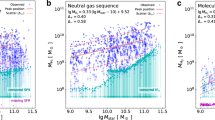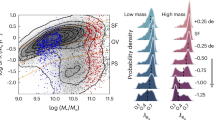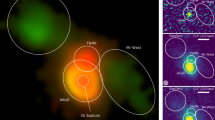Abstract
ONE of the most mysterious results of the astronomical studies of the universe lies in the fact that all successive degrees of accumulation of matter, such as planets, stars and galaxies, are found in the state of more or less rapid axial rotation. In various cosmogonical theories the rotation of planets has been explained as resulting from the rotation of stars from which they were formed. The rotation of stars themselves (in particular that of B-stars) can be presumably reduced to their origin from the rotating gas-masses which form the spiral arms of various galaxies. But what is the origin of galactic rotation?
This is a preview of subscription content, access via your institution
Access options
Subscribe to this journal
Receive 51 print issues and online access
$199.00 per year
only $3.90 per issue
Buy this article
- Purchase on SpringerLink
- Instant access to full article PDF
Prices may be subject to local taxes which are calculated during checkout
Similar content being viewed by others
Author information
Authors and Affiliations
Rights and permissions
About this article
Cite this article
GAMOW, G. Rotating Universe?. Nature 158, 549 (1946). https://doi.org/10.1038/158549a0
Issue date:
DOI: https://doi.org/10.1038/158549a0
This article is cited by
-
Observational assessment of the viability of de Sitter Gödel de Sitter phase transition
General Relativity and Gravitation (2022)
-
A Conjecture on the Neutrality of Matter
Foundations of Physics (2021)
-
Keplerian motion on a carousel: a research teaching project
Afrika Matematika (2019)
-
Realization of Einstein’s Machian Program: the Pioneers and fly-by anomalies Part I
Astrophysics and Space Science (2012)
-
Energy contents of some rotating spacetimes in teleparallel gravity
Astrophysics and Space Science (2011)



